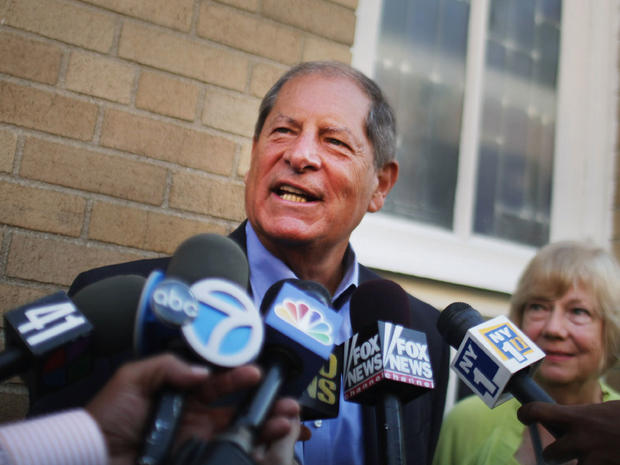New York special election: How Bob Turner won
Because far fewer people vote in special elections, they're always at least partly about turnout. Although without exit polls we cannot say precisely who voted or for whom, the Republicans took advantage of a strong environment for them while an early look suggests plenty of Democrats' regular voters seem to have stayed home, as Weprin failed to take advantage of a substantial numerical registration edge.
In terms of turnout and the Democratic base, consider: Around 60,000 votes were cast in NY-9 last night, or just over half those cast in the 2010 general, or only about 30 percent the figure in a presidential year (Tallies are still coming in as this is written.) But Democrats have a registration edge of 3 to 1 in NY-9 and there are 180,000 registered Democrats. Weprin only got just under 28,000 votes thus far. (There are 60,000 registered Republicans. Turner got just over 32,000 votes.)
Bob Turner did what he had to do, winning handily in the more conservative Brooklyn portion of this district (by about 2 to 1) and ran almost even with Weprin in Queens - while Weprin really needed bigger turnout and support in the larger Queens portion to have been competitive.
It's not a perfect comparison, but contrast last night to NY-26, the upstate district where Democrat Kathy Hochul won a special election in Republican territory in May. In that district Republicans have an edge in registration. 102,000 total votes were cast, or about 40 percent of the 2008 general - a pretty substantial turnout. There are 140,000 registered Democrats there and the Democrat managed 43,000 votes. Meanwhile in California's 36th, where Democrats also won a special election this year to hang on to a Democratic leaning seat in a tough race, 76,000 votes were cast, also 30 percent of the general election, but Janice Hahn got 41,000 votes in a district with 150,000 registered Democrats and a almost 2 to 1 registration edge.
The Republicans' opening here, which they made work to their advantage, started with having a district with a higher conservative composition than other nearby NYC districts. Obama carried 55% here - solid, to be sure, but compare that to about 90 percent in nearby House districts. Although local issues matter - they usually do in special district elections - the national environment as measured in the pre-election polls was clearly unfavorable to an incumbent party, and Turner sought to make national themes part this campaign. In a Siena Poll of likely voters just before election day, three-quarters said the country was on the wrong track. Most had an unfavorable opinion of President Obama (including three in ten Democrats.)
So with this the GOP evens the score in this year's New York special elections this year. Interestingly in both this and NY26 some of the nationally-oriented themes were much the same, with Democrats' message toward the end of each saying that they'd protect Medicare and Social Security. As for what special elections forecast for national trends...
It's pretty inconsistent, at best. Aside from the other two contests mentioned, you'll recall that in early 2010 Democrats won a special election in Pennsylvania (PA12) that many thought tested a winning formula for them in November 2010...

